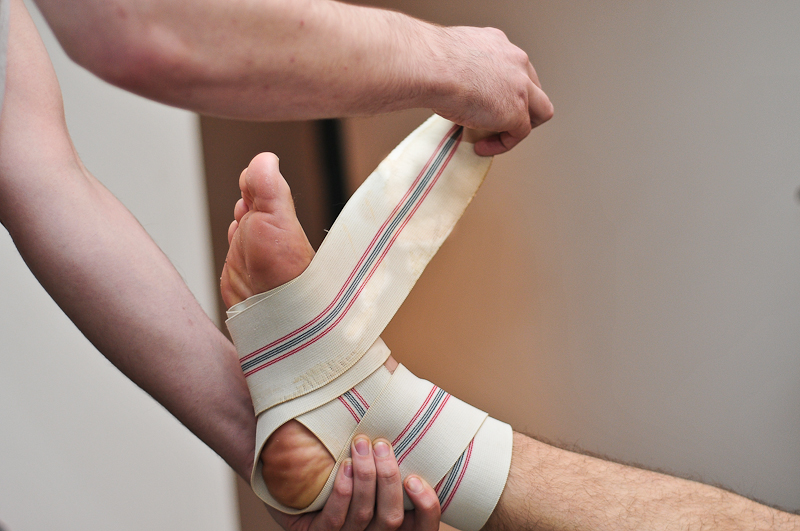There are 23 Ravens on the women’s soccer team, and several of them sat out games this season due to sports-related injuries.
Alyssa Johnston had surgery in January to repair a torn ACL. Johnston, who’s in second-year, hasn’t played for two seasons now after a broken arm took her out in the 2013 season. The lost muscle mass during her recovery is what caused the torn ACL when she got back into training in preparation for the 2014 season.
“Six months from here, I should be back to full performance,” she said.
Johnston’s teammates Adrianna Ruggiero and Rozlyn Boutin also sustained injuries last season. Both players injured their ankles at different points during the same midseason game against Nipissing University.
There are seven athletic therapists who work in the university’s Athletic Therapy Clinic with varsity athletes like Ruggiero, Boutin, and Johnston while they work on getting back to their full potential as Ravens athletes.
“We have a great athletic therapy team,” she said. “We know them all by name.”
The clinic is a classroom-sized space in the corner of Carleton’s athletic facilities that staffs seven athletic therapists treating 20-30 varsity athletes per day.
Johnston has appointments at the clinic two or three times a week to massage out tight muscles, do strengthening exercises, and balance activities.
“That’s the hot spot for anyone who has a current or previous injury—it’s a very social thing,” Johnston said.
“It’s not just for injuries,” she said, adding that athletes can come to the clinic to ice after practice or fill up their water bottles, “Even if you’re not injured, you come in to say ‘Hello.’”
Ruggiero is still strengthening her ankle and getting back into training after the late-September injury.
“I’m trying to push through it because I’m really tired of sitting off,” Ruggiero said, who played on her bone-bruised ankle on and off for the rest of the season.
“I would be playing and the next day I wouldn’t be able to walk,” she said. “It was kind of a disaster.”
Now the season’s over, Ruggiero said she’ll return to therapy once or twice a week while she trains with the team and continues to ice and tape her injured ankle.
“I’ve been in that room almost every year,” the fourth-year student said.
Boutin, too, struggled with staying off the field.
“I’m not really a player that gets injured,” she said.
Boutin got back on the field for the first few games after she sprained her ankle. She said that likely caused greater damage.
After the first few games, when it came to deciding whether or not she would play a certain game, Boutin said she consulted her therapist and had a say in whether or not she felt ready.
“I wanted to play and [my coach] wanted me to play,” she said.
The seven athletic therapists who work in the clinic are assigned to specific teams and are tasked with attending that team’s games, but they work with all athletes inside the clinic. Cailey Bryson, who’s assigned to women’s basketball, said most athletes go through a six to seven phase recovery process.
For acute injuries like a sprained ankle, recovery starts with total rest and then regaining range of motion. From there, therapists work in regaining basic strength, maintaining range of motion, and then more challenging strength training, Bryson said.
Athletes have to be back to 80 per cent strength before they return to play, according to Bryson.
“Of course you want to try to get your athletes back on the court or the field,” Bryson said “We cut corners to try to get them out there as fast as possible, but safety comes first.”
The clinic sees between 10-15 injuries a year that have athletes sitting out of entire seasons. These include torn ACLs like Johnston’s, shoulder injuries, and freak accidents, Bryson said.
In addition to Johnston’s torn ACL as well as Ruggiero and Boutin’s ankle injuries, the women’s soccer team saw at least four concussions, according to Ruggiero.
Bryson said the therapists keep an eye on recurring injuries that might be a result of an issue in training or footwear.
“We want to make sure they’re all safe and able to continue playing,” she said.






